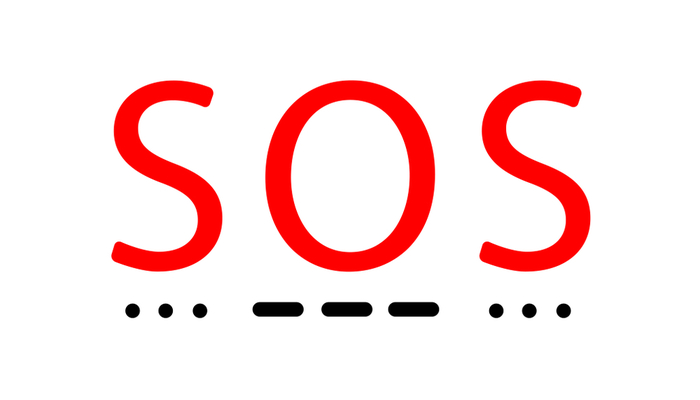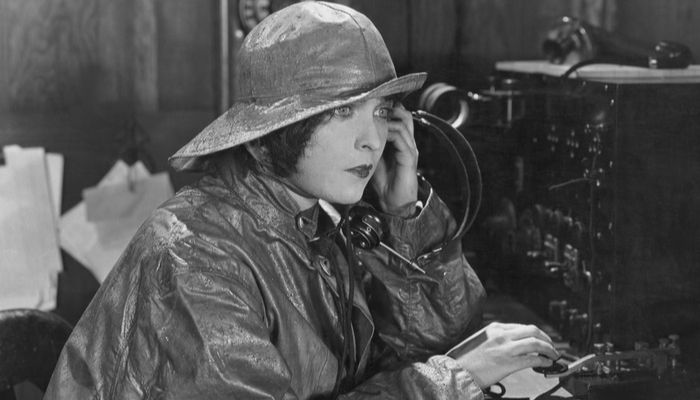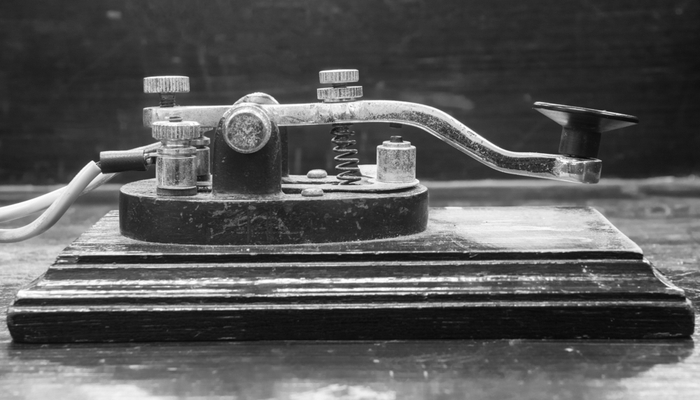SOS – Save our souls, right? As it turns out, the meaning behind the international distress signal isn’t quite what we all think it is. In fact, the three letters aren’t even an acronym at all. This is the truth behind what SOS actually does – or doesn’t – stand for.
The Truth About The Meaning of SOS
For years, the general public has thought that the international distress signal SOS is an abbreviation for something. The most common assumptions are “save our souls” or “save our ship”. While these do technically make sense and many people refer to these phrases today, they’re actually not true. These meanings were applied after the creation of SOS, not before.
The reality is that SOS wasn’t ever actually intended to be three letters. Truthfully it is a continuous Morse code string of three dots, three dashes, and then another three dots. The code looks like this: …—… (1)

There are no spaces or full stops. In international Morse code, however, three dots together do technically mean the letter “S”, and three dashes or lines together do technically mean an “O”. This is where the code turning into SOS came from.
The Origins of SOS
For many, many years, people have used SOS to signal to others that they need help. In movies, it is often depicted as someone writing out the letters in a large size in hopes that a plane flying above them might see it. Of course, regardless of the meaning, everyone now knows that this means someone is in distress and is in need of rescuing.
So if the combination of dots and dashes in Morse code actually does translate into SOS, why doesn’t it have any real meaning? The thing is, is that SOS isn’t the only letter combination you could draw from the signal. It could also depict IJS, SMB, or VTB. An international committee selected this code, however, because it was straightforward and simple. When a ship is in distress, you want a signal that won’t be misinterpreted no matter where you are and that can be sent out quickly.
Read: Scientists Amazed At Health Of Man, 87, Who Has Not Washed For 65 Years And Eats Raw Roadkill
Deciding on SOS

Around the turn of the 20th century was when wireless radiotelegraph machines began to become a mainstay on ships. The captain and crews of these ships needed a way to quickly and easily signal to nearby ships and coast guards that they were in danger. This signal needed to be unique, easily and clearly transmittable, and be one that wouldn’t be confused with others.
At first, the different countries and naval organizations each had their own distress signals. For example, the United States Navy used one that translates to “NC”. This was the maritime flag signal for distress from the International Code of Signals. The Marconi radiotelegraph company had its own signal “CQD”. It was actually the German Regulations for the Control of Spark Telegraphy that mandated that all German ships used “…—…” in 1905. (2)
Is you can imagine, having various distress signals made communication of trouble confusing and potentially very dangerous. After all, if another ship or operator doesn’t understand that our signal means you are in trouble, they won’t know to come and help you. This became especially troublesome for ships in international waters dealing with language barriers. Because of this, along with a few other reasons, several countries decided to get together to determine an international code that they all would use.
Read: The Traffic Jam That Was Stuck In a Belgian Forest For 70 Years
The International Wireless Telegraph Convention
In 1906, Berlin hosted the International Wireless Telegraph Convention. It was here that delegates attempted to establish an international Morse code for distress. At the beginning of the conference, Marconi proposed “-.-.–.–..”, and Italy proposed “………-..-..-..”, which translates to “SSSDDD”. The delegates at the conference, however, decided that these codes were far too complicated. They then decided that Germany’s “…—…” was simple to understand and not so cumbersome to type out. It was also hard to misinterpret, no matter what language the recipient speaks. On July 1, 1908, it went into effect as the international code for distress.

Changes Took Time
In August of 1909, the wireless operators on the SS Arapahoe sent the first SOS signal when the ship was disabled by a broken propeller off the coast of Cape Hatteras, North Carolina. Not everyone, however, made the change quite so quickly. It took a while for Marconi, for example, to give up their “CQD” signal. In fact, when the Titanic went down, the operators used the Marconi signal first before someone finally suggested that they try SOS. Could using the SOS signal right away have saved the people lost in the Titanic wreck? It’s hard to say. Today, however, this is the international standard signal for help.
Keep Reading: Reddit ‘scientists’ share the scariest things humanity ‘doesn’t know’ about the world
Sources
- “What SOS Stands For and Where It Came From.” RD. Brandon Specktor. June 18, 2021.
- “What Does SOS Mean?” Boat Safe. Chris Riley. May 28, 2021.

